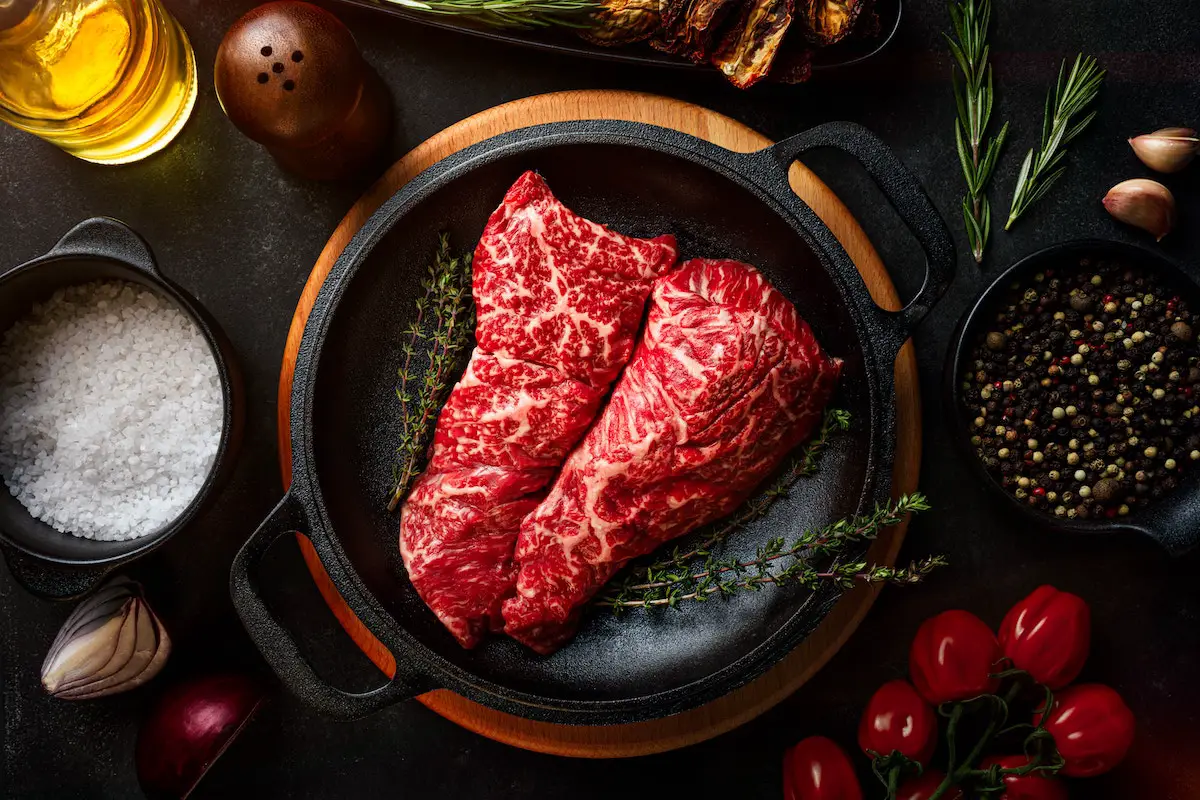
Newsletter Subscribe
Enter your email address below and subscribe to our newsletter

Enter your email address below and subscribe to our newsletter

As a professional chef, I’ve cooked thousands of steaks on cast iron skillets.
And let me tell you, there’s nothing quite like the flavor and texture you get from a perfectly seared steak cooked on a cast iron skillet.
How do you clean a cast iron skillet after cooking a steak? After cooking, let the cast iron skillet cool slightly. Using a spatula, remove residual food bits. Rinse with warm water, then scrub gently using a non-metal brush or non-abrasive scrubber. Dry completely to prevent rust, and finish with a light oil layer for seasoning.
But as much as I love cooking with cast iron, cleaning it can be a bit tricky if you don’t know what you’re doing.
In this article, I’ll share some tips and tricks I’ve learned over the years for cleaning a cast iron skillet after cooking steak.
In This Article

First things first, why even bother with a cast iron skillet for cooking steak?
For starters, cast iron skillets are perfect for cooking steaks because they are durable, and can last for generations with proper care.
They’re also excellent heat conductors, which means they get and stay hot evenly throughout the cooking process.
This makes them perfect for cooking steak, as you want to get a nice sear on the outside while keeping the inside juicy and tender.

Cleaning a cast iron skillet after cooking steak isn’t as simple as just throwing it in the sink and washing it with soap and water.
Doing that will actually strip the seasoning off the skillet, which is what gives it that non-stick surface and prevents rusting.
Here’s the best way to clean your skillet:
Before you start cleaning your skillet, let it cool down for a bit.
You don’t want to add cold water to a hot skillet, as this can cause it to crack.
Also, trying to clean a hot skillet can be dangerous and may result in severe burns – I can testify to having near first-degree burns from doing this…
Using a spatula or scraper, remove any bits of food that are stuck to the skillet.
You can also use a paper towel to wipe away any excess grease or oil.
Add hot water to the skillet, filling it about a quarter of the way full.
This will help loosen any remaining food particles without stripping the seasoning from the skillet.
Sprinkle a generous amount of kosher salt onto the skillet and use a scrub brush or cloth to remove any remaining food particles.
The salt acts as an abrasive and helps to clean the skillet without damaging the seasoning.
Once you’ve scrubbed the skillet with salt, rinse it with hot water and dry it thoroughly with a clean towel.
It’s important to make sure there’s no moisture left on the skillet, as this can lead to rusting.
It’s generally not recommended to use soap on a cast iron skillet, as it can strip the seasoning off. However, if you really feel the need to use soap, just be sure to use a mild soap and rinse it thoroughly.
If your skillet develops rust, don’t panic. Just use a scrub brush or steel wool to remove the rust, then re-season your skillet.
You should season your skillet every few uses, or whenever the surface starts to look dull or sticky.
No, you should never put your cast iron skillet in the dishwasher. The high heat and harsh detergents can damage the seasoning and cause it to rust.
Cleaning a cast iron skillet after cooking steak doesn’t have to be difficult.
With the right technique and a little bit of know-how, you can keep your skillet looking and performing like new for years to come.
Remember to never use soap, always dry the skillet thoroughly, and keep it well-seasoned. Happy cooking!